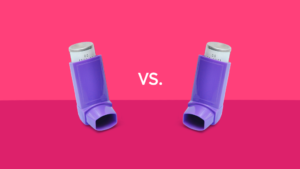10 Warning Signs and Symptoms of Diabetes: Recognizing the Early Signs of Diabetes
HOME | DIABETES EDUCATION |10 WARNING SIGNS OF DIABETES YOU SHOULDN’T IGNORE
Diabetes is a chronic condition that affects how your body turns food into energy. With diabetes, your body either doesn’t make enough insulin or can’t effectively use the insulin it produces. Insulin is a hormone that regulates blood sugar. Hyperglycemia, or high blood sugar, is a common effect of uncontrolled diabetes. Over time, it can cause serious damage to your heart, blood vessels, eyes, kidneys, and nerves.
The early signs of diabetes can be subtle. Some people don’t recognize the symptoms. Others ignore them. But it’s important to know your risk and watch for signs of diabetes so you can get treatment before complications develop. Here are 10 signs and symptoms of diabetes you shouldn’t ignore:
Key Takeaways
- Frequent urination and increased thirst are classic diabetes symptoms, as your kidneys try to flush out excess sugar.
- Increased hunger, even after eating, and unexplained weight loss could indicate diabetes as your cells are starved for energy.
- Fatigue, weakness, dizziness and blurred vision are other important diabetes warning signs.
- Slow healing cuts, bruises and sores may mean diabetes is impairing your circulation.
- Tingling, pain or numbness in your hands and feet can be a sign of diabetic nerve damage.
- Recurring infections like yeast infections and skin problems like itching can happen with elevated blood sugar.
- Let your doctor know if you experience any symptoms or have risk factors like being overweight or having a family history of diabetes.
- Getting tested early and making lifestyle changes to control blood sugar can prevent serious diabetic complications.
1. Frequent Urination and Increased Thirst
Frequent urination and increased thirst are classic diabetes symptoms. When you have diabetes, excess sugar builds up in your blood. Your kidneys filter and absorb the extra sugar into the bloodstream. This causes frequent urination as your body tries to expel the excess sugar.
As a result, your body becomes dehydrated and thirsty from the frequent urination. You may find yourself waking up several times a night to urinate. During the day, you may urinate more often and in larger amounts than normal. Increased thirst goes hand-in-hand with frequent urination.
Frequent urination and increased thirst are some of the earliest signs of diabetes. Pay attention to how often you need to urinate. See your doctor if it becomes excessive.
2. Increased Hunger and Unexplained Weight Loss
Increased hunger and unexplained weight loss are other common diabetes symptoms. Despite eating, you can experience extreme hunger. This happens because your cells are deprived of energy.
Your body converts most foods you eat into glucose to fuel your cells. But with diabetes, either your body doesn’t make enough insulin or your cells become resistant to insulin. This prevents your cells from absorbing enough glucose for energy. Your cells become “starved” and send signals to your brain telling you to eat more.
In an attempt to find energy, your body also starts breaking down muscle and fat. This causes unexplained weight loss. Losing 10 to 20 pounds without trying could indicate diabetes.
If you suddenly develop insatiable hunger and start losing weight without changing your diet or exercise routine, see your doctor.
3. Fatigue and Weakness
Feeling extremely tired and weak is another diabetes symptom. When your cells can’t get enough glucose for energy, you can experience profound fatigue and weakness. Also, if diabetes leads to dehydration, low energy goes hand-in-hand.
You may feel like no matter how much rest you get, you’re always exhausted. Pay attention to any unexplained fatigue. If you feel wiped out all the time, get checked for diabetes.
Fatigue and weakness that persist could be diabetes warning signs. Don’t write them off as simply getting older or just being tired.
4. Blurred Vision
Glucose imbalance caused by diabetes can make the lens in your eye swell, which affects its ability to focus. You may experience blurry vision as a result.
High blood sugar also damages blood vessels and nerves in the eyes. This can affect the muscles controlling your lens and cause vision changes.
Blurry vision caused by diabetes may come and go at first. Over time, it can get worse and lead to blindness. See an eye doctor immediately if you have sudden vision changes.
Diabetes can affect various parts of your eye. Sudden changes in vision could be an early warning sign to get evaluated.
5. Slow Healing Cuts and Bruises
Did you know high blood sugar affects your blood’s ability to clot? It also reduces blood circulation. Having diabetes makes it harder for your body to heal cuts, wounds and bruises.
When you get a minor cut or scrape, it may take weeks to heal. Small bruises may last a long time as well. Poor circulation and nerve damage from diabetes contribute to slow healing.
Pay attention to any cuts, blisters or sores that are slow to heal. It could indicate a problem with your blood sugar. See your doctor if you notice this diabetes symptom.
Slow-healing injuries are a red flag for diabetes. Have your blood sugar level checked if wounds take longer than usual to heal.
6. Yeast Infections
Yeast infections are more common with diabetes because yeast thrives on excess sugar. When your blood sugar is high, some of that extra sugar spills into your urine. Yeast absorbs the sugar in the urine and proliferates.
Women with diabetes tend to get vaginal yeast infections more often. Men can develop yeast infections around the penis. Mouth infections like thrush are also more likely when blood sugar is high.
Frequent yeast infections of the skin or mucous membranes may signify diabetes. See your doctor to get your blood sugar tested.
7. Itchy Skin and Other Skin Changes
Itchy skin is a common complaint with diabetes. When your blood sugar is constantly high, your body loses fluid. This leads to dry, itchy skin. You may notice red, swollen, cracked or scaly patches.
Some people also develop skin tags, which are small, flap-like growths. And dry, flaky skin that doesn’t improve with moisturizer could be a diabetes symptom. Pay attention to any unexplained skin changes.
Skin problems like constant itching, skin tags and dryness could indicate diabetes. Have your blood sugar level checked.
8. Tingling or Numbness in Hands and Feet
Tingling, burning or numbness in your extremities could be a warning sign of diabetes. Also called diabetic neuropathy, nerve damage is one of the most common complications of diabetes.
High blood sugar injures the walls of the tiny blood vessels that supply nerves. Damage to these blood vessels can impair sensation in the hands, arms, feet and legs. Sometimes nerve damage causes pain or cramping.
See your doctor if you experience tingling, numbness or pain in your feet or hands. Treating neuropathy early is important.
9. Dizziness
Feeling lightheaded or dizzy can be another diabetes symptom. When your blood sugar spikes and plummets, it can cause dizziness. Dehydration from increased urination also may lead to dizziness.
Dizziness related to diabetes may be mild at first. But it can increase and lead to passing out if it’s not treated. If you experience any unexplained dizziness or vertigo, get your blood sugar tested.
Dizziness may indicate your body is having trouble regulating blood sugar. See a doctor if you experience episodes of lightheadedness or vertigo.
10. Unexplained Weight Loss
Unintended weight loss is often a sign of uncontrolled diabetes. If your body isn’t making enough insulin or your cells become insulin resistant, you can’t get glucose into your cells for energy.
To find fuel, your body breaks down muscle and fat, causing significant weight loss. Losing weight without trying could indicate your body is having trouble regulating blood sugar.
Any unexplained weight loss, in patients with or without known diabetes may be a sign of high blood sugars or another serious illness. It is absolutely necessary to see a physician and undergo a complete evaluation in these cases. https://www.medicinenet.com/is_weight_loss_caused_by_diabetes_dangerous/ask.htm
If the scale is dropping and you aren’t intentionally losing weight, get checked for diabetes. Unexplained weight loss is a red flag.
Who’s at Risk for Diabetes?
Diabetes can affect anyone, including kids and teens. But you may have a greater risk for diabetes if you are:
- Age 45 or older. The risk for type 2 diabetes increases with age, especially after age 45. But diabetes is also on the rise among younger age groups.
- Overweight. Carrying extra weight increases your risk, especially if the weight is concentrated around your belly.
- Physically inactive. The less active you are, the greater your risk. Regular exercise can help you manage your weight and lower your diabetes risk.
- Have prediabetes. Prediabetes means your blood sugar level is higher than normal but not high enough for a diabetes diagnosis.
- Have a family history of diabetes. Having a close relative with diabetes raises your risk.
- Have high blood pressure. Hypertension is common in people with diabetes.
- Have abnormal cholesterol. High LDL (“bad” cholesterol) and low HDL (“good” cholesterol) increase your risk.
- Are a racial or ethnic minority. Risk is higher among African Americans, Hispanics, Native Americans, Asian Americans and Pacific Islanders.
- Have a history of heart disease or stroke. Diabetes raises your risk of heart and vascular disease.
- Have Polycystic Ovary Syndrome (PCOS). This condition raises the risk of diabetes in women.
- Had gestational diabetes. Women who develop diabetes during pregnancy have a greater chance of developing it later on.
If any of these risk factors apply to you, talk to your doctor about getting tested for diabetes sooner rather than later. Getting an early diagnosis and treatment is key to preventing complications.
Complications of Diabetes
Without proper management, diabetes can lead to serious and potentially fatal complications. Consistently high blood sugar level damages blood vessels and nerves. Over time, it takes a toll on major organs like your heart, kidneys and eyes.
Potential complications of uncontrolled diabetes include:
Heart disease and stroke
Diabetes dramatically increases the risk of various cardiovascular problems, including coronary artery disease, heart attack, stroke and narrowing of arteries (atherosclerosis).
Kidney disease (diabetic nephropathy)
The kidneys contain millions of tiny blood vessel clusters that filter waste from your blood. Diabetes damages this delicate web of blood vessels in the kidneys, impairing their filtering ability.
Eye damage (diabetic retinopathy)
Diabetes affects the blood vessels supplying your retina, the light-sensitive layer of cells at the back of your eye. This can cause diabetic retinopathy, which can lead to blindness.
Nerve damage (diabetic neuropathy)
Excess sugar in your system damages the walls of the tiny blood vessels that nourish your nerves, especially in the legs. This can cause tingling, numbness, burning or pain.
Foot damage
Nerve damage in the feet or poor blood flow to the feet increases the risk of various foot complications. Left untreated, cuts and blisters can become serious infections.
Skin conditions
Bacterial and fungal infections can affect people with diabetes more often due to higher blood sugar levels in tissue. Boils, fungal nails, and candidiasis are examples.
Hearing impairment
Hearing problems are twice as common in people with diabetes compared to those without the disease.
Alzheimer’s disease
Having diabetes appears to raise your risk of eventually developing dementia, including Alzheimer’s disease.
Depression
Diabetes doubles your risk of depression, which can make diabetes management more challenging.
Monitoring your blood sugar levels and taking diabetes medications as prescribed can help prevent many complications. But it’s also essential to maintain a healthy lifestyle to manage diabetes and lower your risks.
Lifestyle Tips for Managing Diabetes
Making changes to your daily habits and routines can go a long way toward controlling diabetes before complications develop. Here are some lifestyle measures to help manage diabetes:
- Monitor your blood sugar – Check your blood sugar levels regularly and keep detailed records. This will help you learn how food, physical activity and medications affect your blood sugar.
- Eat healthy – Choose fiber-rich fruits, vegetables, whole grains, lean protein and healthy fats like olive oil and avocados. Avoid added sugars and refined carbs like white bread, pasta, and rice.
- Get active – Aim for 30 minutes of moderate activity at least five days per week to help manage blood sugar and prevent complications.
- Lose extra weight – Carrying extra pounds, especially around the belly, raises your diabetes risk. Losing even 10-15 pounds can improve blood sugar control.
- Quit smoking – Smoking raises your risk of diabetes complications like heart attack and stroke. Kicking the habit improves blood circulation.
- Limit alcohol – Heavy drinking worsens diabetes control and can cause low blood sugar. Limit intake to one drink or less per day for women and two for men.
- Manage stress – Chronic stress prompts your body to release hormones that can raise blood sugar levels. Relaxation techniques like yoga and meditation help counter stress.
- Get enough sleep – Not getting quality sleep can disrupt your blood sugar control. Most adults need 7-9 hours per night.
- Check your feet – Inspect your feet daily for cuts, blisters, red spots and swelling. Catching problems early prevents serious infections.
- Brush and floss – Control blood sugar to keep your gums and teeth healthy. Brush and floss regularly and see your dentist every six months.
Making diet and lifestyle modifications reduces diabetes symptoms and lowers your risk for complications. But you may also need medications and insulin injections to reach optimal blood sugar control. Work closely with your doctor to determine the best treatment plan for your situation.
Seeing Your Doctor for Diabetes Testing
If you’re experiencing potential diabetes symptoms, contact your doctor to get tested. Certain blood tests and health screenings can detect diabetes or prediabetes before complications develop. Diabetes testing may include:
Fasting plasma glucose (FPG) test – Measures your blood sugar level after fasting for at least 8 hours. FPG below 100 mg/dL is normal. 100-125 mg/dL indicates prediabetes. Over 126 mg/dL on two separate tests indicates diabetes.
Oral glucose tolerance test – Measures your blood sugar before and 2 hours after you drink a glucose solution. Results over 200 mg/dL at 2 hours confirms diabetes.
A1C test – Provides an average of your blood sugar control over the past 2-3 months. Less than 5.7% is normal. 5.7-6.4% indicates prediabetes. Over 6.5% indicates diabetes.
Random plasma glucose test – Measures blood sugar without regard to when you last ate. 200 mg/dL or higher indicates diabetes if you’re also experiencing symptoms.
These tests can detect diabetes before complications happen. If results are abnormal, your doctor may run additional tests to confirm the diagnosis. Getting diagnosed early gives you the power to minimize diabetes symptoms and prevent future problems.
Work with Your Doctor for a Treatment Plan
If testing reveals diabetes or prediabetes, work with your doctor to create a treatment plan suited to your situation. Lifestyle strategies combined with diabetes medications and insulin therapy often offer the best results. Treatment goals are to:
- Reach and maintain healthy blood sugar levels.
- Prevent or delay complications.
- Manage diabetes symptoms.
- Maintain your quality of life.
Your doctor will determine if you need medications or insulin injections along with diet and exercise strategies. You’ll learn how to monitor your blood sugar at home. Regular doctor visits, lab tests, eye exams, foot exams and dental checkups are part of diabetes management.
No matter how long you’ve lived with diabetes, it’s never too late to start taking charge of your health. Implementing healthy lifestyle habits and following your doctor’s recommendations will help you successfully manage this condition.
FAQs
What are the early symptoms of diabetes?
Some early diabetes symptoms include frequent urination, intense thirst, increased hunger, unexplained weight loss, fatigue, blurred vision, slow healing wounds, tingling or numbness in hands and feet, and recurring infections.
Who is at risk for developing diabetes?
You are at increased risk if you are over 45 years old, overweight, have a family history of diabetes, don’t exercise regularly, have high blood pressure or cholesterol, or have a history of heart disease.
What tests diagnose diabetes?
Your doctor can use fasting blood sugar tests, oral glucose tolerance tests and hemoglobin A1C tests to diagnose diabetes or prediabetes.
What lifestyle changes help manage diabetes?
Losing weight if overweight, eating a healthy diet, exercising regularly, quitting smoking, limiting alcohol, managing stress, checking your feet, and brushing and flossing help control diabetes and prevent complications.



